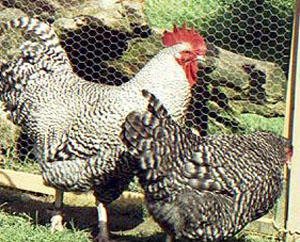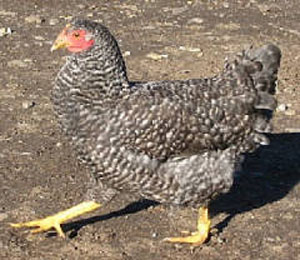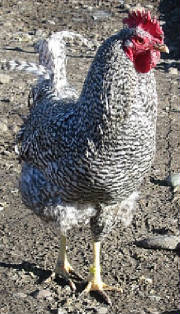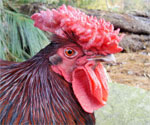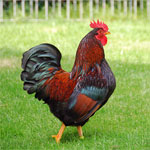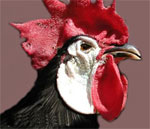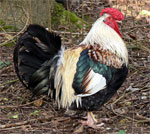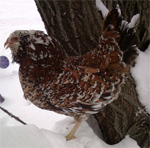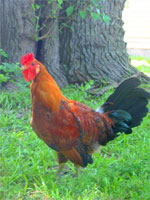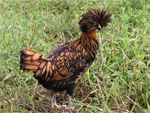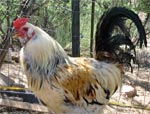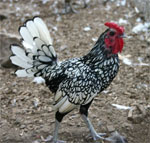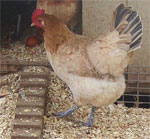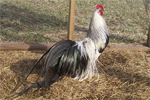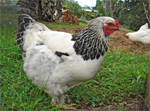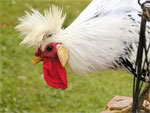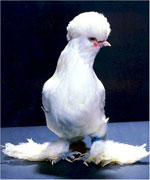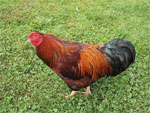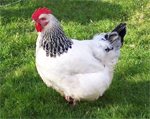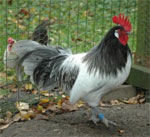Holland Qualities
Dual purpose chickens typically lay brown eggs with the exception of the Hollands. Rutgers Farms bred the Holland to lay white eggs and produce a meaty, yellow carcass preferred by most Americans. Unlike today's egg producers, Hollands thrive in a small farm settings. They withstand confinement well but prefer foraging for their own food. Adaptable, they can live in all latitudes with standard precautions to protect from frostbite. Hollands have a slow growth rate unacceptable in commercial operations but entirely adequate for backyard farmers. Hens go broody when needed and make excellent mothers.
Holland Temperament
Farmers describe the Holland as calm and docile with a cheerful disposition. Hollands, the product of several other breeds, has taken the best from many worlds to produce an independent but pliable chicken. They eat commercial feed but can just as easily forage for themselves. They display few of the irritating traits such as flightiness or aggression seen in other egg layers. They get along with each other in confinement. Quiet, the Holland can live in settings with human neighbors. Changing appetites in eggs and meat have threatened the existence of Hollands rather than any defect in their character.
Holland Appearance
Hollands come into two basic varieties; White and Barred. White Hollands have pure white plumage without any other colors. The Barred Holland has black and white barred feathers covering the entire chicken. Holland hens have a darker plumage than the cocks. The cocks weigh eight pounds, and the hens weight six. Holland have a single, red, six-point comb. All six points stand erect on the cock. The hen's last five points droop. The Standard of Perfection dictates red earlobes for the breed, but most Hollands have white center in their lobe. Medium red wattles dangle from their cheeks.
Holland Upkeep
Hollands need sufficient room to forage for food. Make a large, dry run with available organic feed grains. Supplement their diet with extra protein and calcium to support their egg laying. Provide extra space for nesting. Holland hens prefer raising their own brood. Protect the rooster's comb in the coldest months using petroleum jelly or better yet by providing insulated housing. Hollands face extinction. In fact, the White Holland may not exist. Buy good quality stock from reliable Holland keepers and make the effort to advance the survival of the breed.
|
